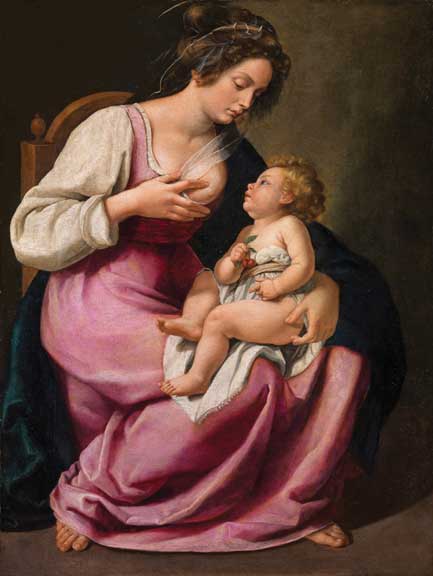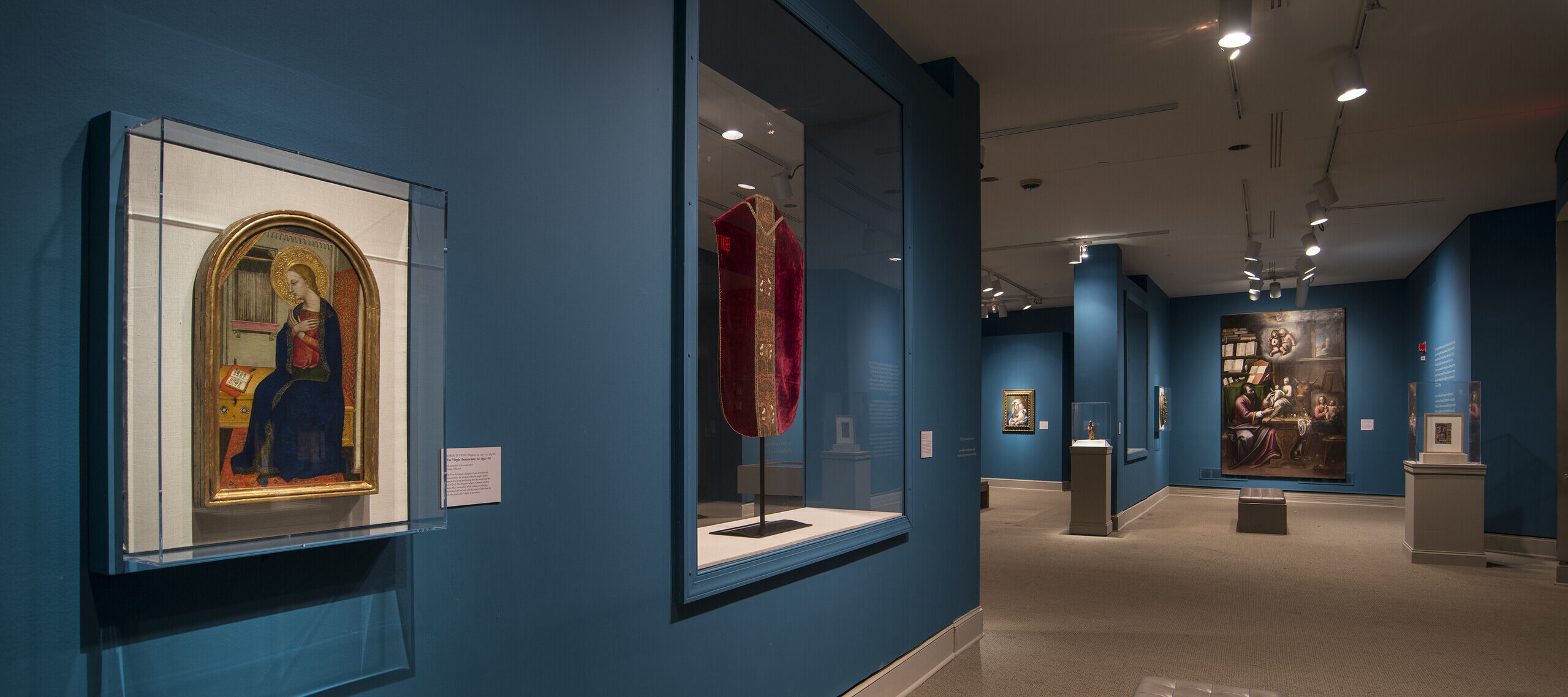The figure of the Virgin Mary has been used in art as an ideal woman, poetic beauty, and perfect mother. Young girls in the Italian Renaissance were told to look up to the examples of the saints, particularly the Virgin, to guide their behavior. Her portrayal provides clues to the theology and culture prevalent at the time.
An example within Picturing Mary: Woman, Mother, Idea of the Virgin as an exemplary mother is Artemisia Gentileschi’s Madonna and Child (1609–10), which shows the Virgin Mary with an exposed breast, nursing her son. This image reveals Renaissance ideas about the exemplary woman and the concern about nourishment and breastfeeding.

Earlier images of the Virgin with one exposed breast may have been especially poignant in times when Florence was affected by famines and food shortages. In 14th-century Italian images, the single exposed breast of the Virgin was a frequently defined part of Mary’s body. Viewers would not see her breastfeeding as a moment of exposure, but rather as a moment of nurturing and providing.¹ Between bouts of plague and food shortages in the face of a rapidly increasing population, diet and malnutrition were a considerable concern. The health and nourishment of children, especially a male baby such as Christ, would have struck viewers as an utmost concern.
This 17th-century Gentileschi image differs from the common medieval type. The body of the Virgin is clearly formed beneath the fabric of her gown; Christ sits between her knees and her trailing gossamer hair ribbons draw even more attention to her flesh. Her bare feet connote her humility and connection to the earth. Here, Mary is a humble mother who cares for her corporeal, human son by giving him the nourishment of her body. The child’s limbs are chubby, and his pink face suggests that he is healthy, well-fed, and cared for by his attentive mother.
Even as Gentileschi was painting this image, concerns about nutrition and breastfeeding within Renaissance culture were numerous. Humanists had rediscovered the antique medical theories of the Greek physician Galen, whose beliefs about reproduction gained attention. Rather than contributing to the matter or spirit of the child (this was attributed to the father only), Galen believed that the mother’s main contribution came from the breast milk that a child consumed. Further, he believed that the breast milk was heated, purified menstrual matter, and that it contained properties that could shape the personality and physical appearance of the child. An infant’s proper consumption of milk was seen as important.
For many upper-class Renaissance families, this concern about nutrition was directed toward finding a suitable wet-nurse, as her breast milk would be ingested. No matter what, people were concerned about the baby imbibing good traits rather than monstrous ones. Gentileschi’s Mary is obviously an elite woman, from her clothing, but the fact that she’s nursing her own baby could be seen as another sign of humility.
As Christ is nursed here by his mother, he not only imbibes her good qualities and exemplary characteristics, but her humanity. The image and their interaction would remind the viewer of Christ’s sacrificial flesh, and the Virgin’s own part in his passion.
Notes:
- Miles, Margaret. “The Virgin’s One Bare Breast: Nudiity, Gender, and Religious Meaning in Tuscan Early Renaissance Culture.” In The Expanding Discourse: Feminism and Art History, by Norma and Mary D. Garrard Bourde. Westview Press, 1992.

